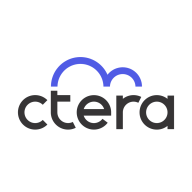


CTERA Enterprise File Services Platform and Carbonite Migrate compete in data management and migration. CTERA stands out with positive customer feedback on features and support, while Carbonite Migrate is preferred for its strong migration capabilities.
Features: CTERA Enterprise File Services Platform includes collaboration tools, integration capabilities, and data security. Carbonite Migrate offers seamless data migration, automation, and minimal downtime. CTERA focuses on protection and collaborative features; Carbonite Migrate is known for efficient migration.
Ease of Deployment and Customer Service: CTERA provides flexible deployment options like hybrid and multi-cloud, with comprehensive support. Carbonite Migrate ensures swift deployment with focused customer assistance for migration.
Pricing and ROI: CTERA Enterprise File Services Platform offers strategic pricing for security and collaboration, promising robust ROI for collaborative solutions. Carbonite Migrate offers ROI with precise migration capabilities, providing cost-effectiveness through reduced downtime.


IBM Turbonomic offers automation, planning, and right-sizing recommendations to streamline resource management, improve efficiencies, and optimize costs across virtualized environments and cloud platforms.
IBM Turbonomic is valued for its capability to optimize resource allocation and monitor virtual environments efficiently. It facilitates automated decision-making in VM sizing, load balancing, and cost optimization for both on-premises and cloud deployments. Users can leverage insights for workload placement, ensure peak performance assurance, and effectively right-size across VMware and Azure. The ongoing transition to HTML5 aims to improve visual and navigational ease, while expanded reporting features are anticipated. Opportunities for improved training, documentation, and integrations enhance platform usability and functionality.
What Are the Key Features?In finance, IBM Turbonomic aids in maintaining platform efficiency during market fluctuations. Healthcare organizations leverage its capability for resource optimization during high-demand periods to enhance patient care support. Retailers use it for planning in peak seasons, ensuring resources align with fluctuating demand to maintain performance continuity.
Carbonite Migrate allows you to easily migrate physical, virtual and cloud workloads to and from any environment with minimal risk and near-zero downtime. Options for finely tuned automation help orchestrate every stage of the process.
The CTERA Enterprise File Services Platform provides a cloud-native global file system over public and private object storage, revolutionizing the world of hybrid cloud data solutions. Enhanced by a rich data services ecosystem, CTERA enables enterprises to gain full control of their data for optimal edge performance, data insight, and governance. The platform focuses on security, providing features like data encryption, access controls, and ransomware protection. Centralized management tools enable efficient data control and monitoring. The platform is being used to replace legacy NAS and file servers, especially at remote locations, and simplify backup and disaster recovery of file data while providing the flexibility of multi-cloud deployments with infinite scalability. CTERA is at the core of hybrid cloud transformations of some of the world’s largest banks, healthcare organizations, global media groups, and government agencies, in deployments that scale to tens of petabytes.
We monitor all Cloud Migration reviews to prevent fraudulent reviews and keep review quality high. We do not post reviews by company employees or direct competitors. We validate each review for authenticity via cross-reference with LinkedIn, and personal follow-up with the reviewer when necessary.